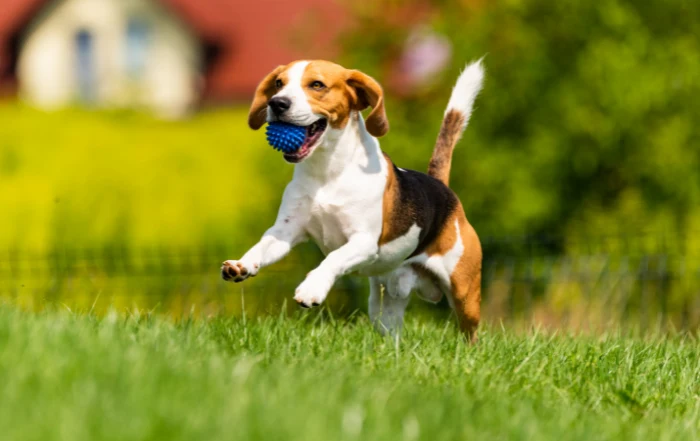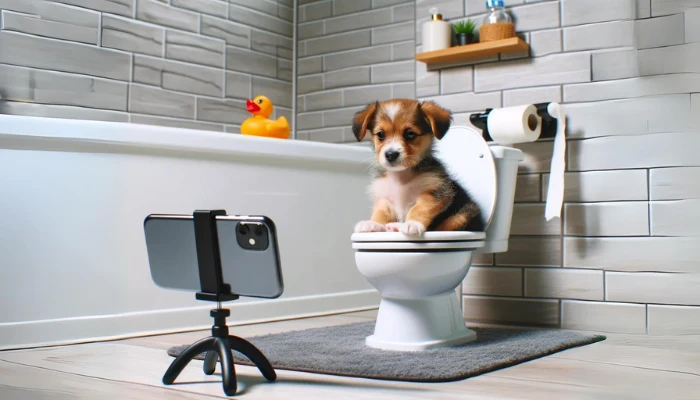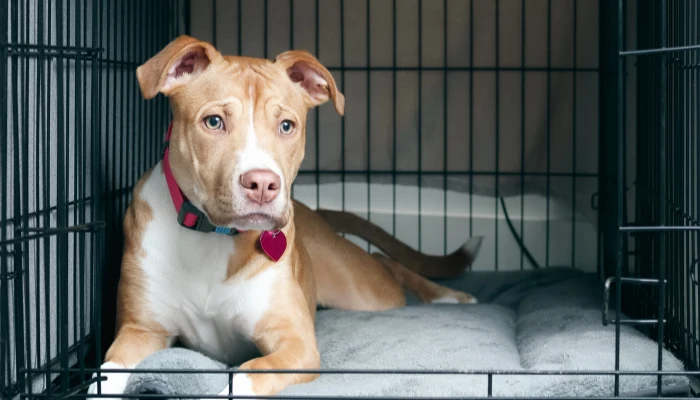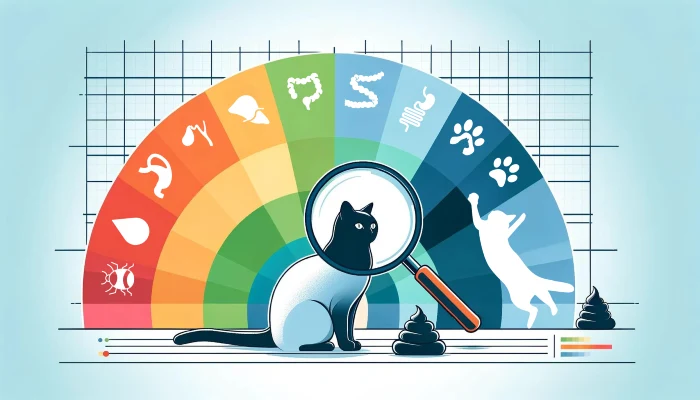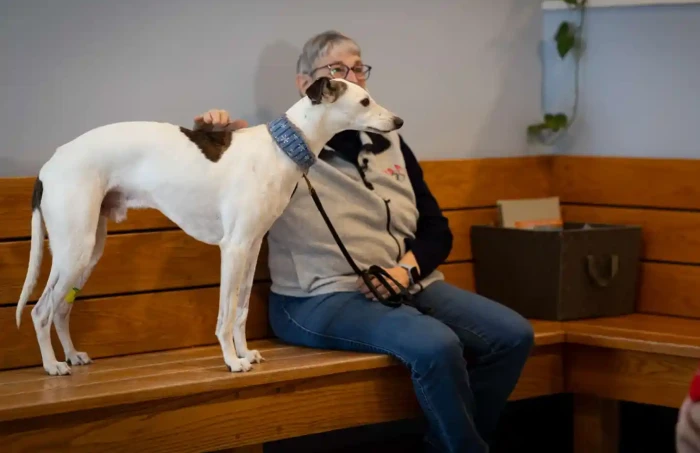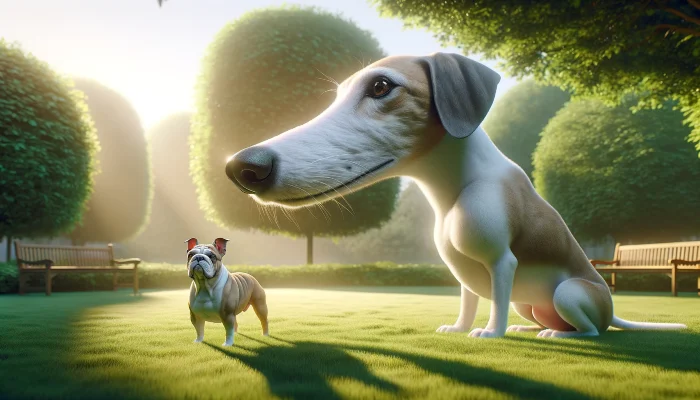There are many breeds of dogs that are considered high energy breeds. You’ll typically come across this high-energy mix in the breeds from the Herding, Working, Sporting, and Terrier groups.
And, of course, mixes of these breeds will tend to have high energy as well (and be adorable). So, if you’re thinking about getting or already own a high energy dog, it’s important to make sure that you give your active buddy plenty of energy burning activities to keep them healthy both physically and mentally. If that energy has no outlet it can lead to your dog developing behavior problems such as excessive barking, digging and chewing and in turn destroying your house and yard.
So many high energy breeds or their mixes end up in shelters or are given away because their owners can’t deal with the destructive, hyper behavior anymore. And it’s 100% preventable!
Finding an activity that you and your energetic pup can do together will strengthen your bond and make your life together much more enjoyable.
Here is a list of fun activities you and your active dog can do together to keep you both happy and healthy. I’ve also included a list of some of the most active breeds of dogs below, if your pup is on that list, find a high-energy activity you can do together!
A word of caution before you start…
Before you start any strenuous activity with your dog, be sure that he/she has a check-up with the vet, this will ensure that there are no underlying issues with your buddy that need to be addressed before starting your new activity to reduce the chance of injury to your dog.
It’s also important to start the new activity for a short time at first and build up the amount of time slowly to allow your dog to build up the endurance he will need to do the activity safely.
A couple of other tips to keep in mind is to make sure that your dog is up-to-date with his vaccinations and that he wears an ID tag and is microchipped in case he gets loose, so he can be returned to you and not to exercise outdoors when it is hot or only go out early in the morning or early evening to reduce the risk of your dog having a heat stroke.
Obedience Training
Every dog regardless of size or breed should complete at least a basic obedience course, this will help you have better control of your dog in many situations, this small step could save your dog’s life. Obedience is a great way to build a great relationship with your dog, as it helps you learn to communicate with each other and keeps your dog’s body and mind active and healthy.
There are different levels of obedience from basic to advanced, there are even competitions you and your dog can earn titles in.
Look online for a reputable obedience school in your area and find a class that will work for your schedule. Now, you’ll discover that there are many different schools of thought on obedience training, which is why we’ve put together a handy article for you, detailing the most popular ones.
You can even check for any groups or clubs that are in your area where you can find other owners to practice with. Your dog can even work to get its Canine Good Citizenship degree, and this can open the door to getting your dog involved in becoming a therapy dog that visits hospitals and nursing homes to bring comfort and joy to patients. A well-trained dog will be appreciated by everyone.
Agility Training: Who Doesn't Love Obstacle Courses?
Agility is the perfect activity for a high energy dog, it requires your dog to run an obstacle course with obstacles like jumps, dog walk, weave poles, seesaw, tunnels, A-frame, tire jump and pause table, with you running beside him and directing him to each obstacle he must conquer, and it has to be done quickly since it’s a timed competition.
Each dog and owner are judged on how well each obstacle is done and how fast it takes you two to complete the course, a lot of dogs and their owners almost become addicted to agility because of how exciting and fun it is for both of them.
Many dog shows will have agility competitions that you can register to compete in, and they have competitions in levels from novice to master and in order to move from one level to another depends on the grade you achieve for each competition.
Agility takes a lot of hard work from you and your dog, but it’s so worth it to see how excited your dog gets each time he runs a course.
Check online or with your local kennel club and find an agility class that you can take. There are even agility clubs you can join, and find other owners you can practice with.
A lot of owners that get into agility with their dogs and have the space in their yard, will set up a course at home to practice, it really is an addictive sport. Check out a competition in your area and see how much fun it is for the competitors, it really is the perfect activity for an active dog.
Walking, Jogging, or Running: The Classics!
You can pick one of these activities that will best suit your activity level, so it’s enjoyable for both you and your dog. If you’re already doing one of these activities, and you want to include your dog, be sure to take it slow until your dog can build up his endurance to be able to do the distance that you already do safely, this will reduce the chance of injury to your dog.
It’s important to use a harness or a martingale collar when doing these exercises, they will help reduce the chance of your dog slipping out of its collar, and also help reduce the risk of damage to the throat if your dog tends to pull.
Also, don’t use a Flex Lead as they make it difficult to keep your dog close to your side, which makes it harder to control him when you need to, instead, choose a 4-foot leather (leather is more comfortable for you to hold) or nylon lead.
Of course, you can use a 6-foot lead if you have a shorter dog. Whatever allows you to keep your dog as close to you as possible to maintain control.
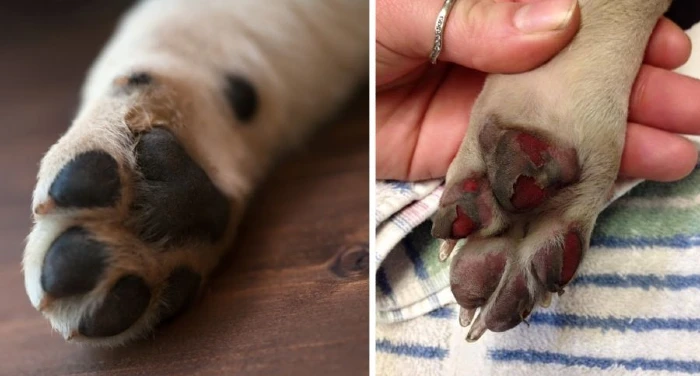
Always be sure to protect your dog’s feet when doing one of these activities by avoiding sidewalks and asphalt in the warmer months to prevent your dog’s feet from being burnt, use a dirt path instead and during winter months in regions that use salt or deicers, be sure to wash your dog’s feet thoroughly right when you return home to rinse off any salt or deicer from their feet to prevent it from causing irritation to your dogs feet or illness if they ingest it when licking their feet.
If your dog tolerates them, you can get your dog a set of dog boots to protect their feet from injury on most surfaces.
Bike Riding: Well, You're Riding The Bike...
Bike riding is also a good way that you and your dog can burn off some energy together, it can be a nice leisurely bike ride or a little faster depending on how much stamina you and your dog have.
It’s not recommended to hold your dog’s leash while you bike, instead you will want to purchase a product that is mounted to your bike that safely keeps your dog next to your bike. You can find these products online or in pet stores, there is one called Walky Dog or one that you can find at biketowleash.com, check them out and find the one that will work best for you.
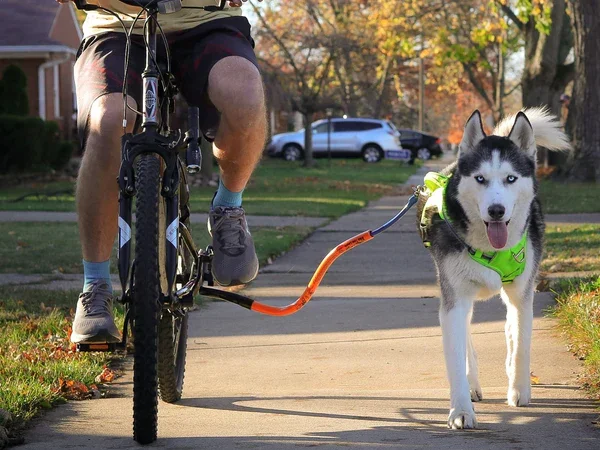
Be sure that you start your dog out slowly until he gets used to being near the bike and also allow him to build up his endurance, increase the distance and speed in small increments to reduce the risk of injury to your dog.
Please don’t bike when it’s hot! Bike early in the morning or late in the
afternoon, when the temperatures are lower, to avoid the risk of your dog suffering from a heatstroke.
Bring along water for both you and your dog, no matter what the temperature is, and take at least a few breaks so you both can rehydrate to avoid becoming dehydrated. It’s best to stick to bike paths when biking with your dog to reduce the risk of injury to both of you.
Hiking: Good For Both Of You
Hiking in a park and being in nature and breathing the fresh air is a wonderful activity for you and your dog to enjoy.
You can go to any large local park that offers you a variety of paths that will let you and your dog experience different terrains, you can even plan weekend trips to a National Park to expand your experiences.
Be sure that your dog wears an ID tag and is microchipped to help him get returned if he gets loose. You will want to bring some water and some treats for both of you to make sure that you both stay well hydrated and have some energy packed treats to get you through your hike.
You can even teach your dog to carry his own backpack (check online for a K9 backpack to fit your dog) with his supply of water and treats.
Never let your dog off the lead when hiking to reduce the risk of him running off after any wildlife and getting injured or lost.
Even a well-trained dog can be easily enticed to chase a squirrel or rabbit that runs by.
Keep an eye on your dog to make sure he isn’t getting overheated or too tired.
If he starts to pant heavily or slows down, take a break for a drink and treat and give a chance to catch his breath before venturing off again.
Never force your dog to continue if he shows signs of being exhausted, continuing on will put him in danger of collapsing, and you could lose him.
When you first start hiking, keep them short for the first couple and add additional distance in small increments to allow his body to build up the strength and endurance he needs for longer hikes in the future.
Always be safe and check the weather forecast in the area you will be hiking, and also check what predators may be found in the area, and be aware of your surroundings at all times, to help reduce the risk of being caught off guard by a sudden storm or large predator.
It’s a good idea to carry rain gear and some form of protection (like bear spray, for example) from predators you may encounter.
Also pack some first aid supplies for both you and your dog in case of emergency, no matter how long your hike will be.
To make hiking even more fun and safe, find a friend or two that would like to join you on hikes.
Hiking can be an exciting activity, full of new sights and smells, and it will help keep your active dog’s body and mind happy and healthy.
Dog Parks: Go Regularly & Make It Routine
Dog parks are a great place to let your dog burn off that extra energy and thankfully many cities and towns are building dog parks, so they are becoming easier to find in most areas.
The dog park also offers a great opportunity to find other dog owners in your area that you can set up regular play dates with, so your dog will have a buddy or
two to help burn off even more energy.
It’s important that your dog be well socialized and good with other dogs before venturing off to the dog park, this will reduce the chance of your dog getting into fights with other dogs.
A dog should be socialized around dogs of all sizes and breeds as puppies, but it’s still a good idea to do any new introductions on leash just in case, it’s easier to control your dog when he is on a leash and if you notice any signs from your dog or the other dog/dogs leave the park immediately to avoid any fights.
Make sure your dog wears a collar or harness with an ID tag and have him microchipped in case of escape, and also make sure he is up-to-date on his vaccines and flea/tick prevention. Bring along his favorite ball or other toys along just in case there aren’t any other dogs to play with, the more activity you get him to do while you’re there the better.
Frisbee: The American College Classic, Canine Version
No doubt, you know all about a dog’s love for the game of Frisbee. After all, it takes the standard game of fetch and kicks it up a notch. Plus, as a pet owner, we can exhaust our high-energy dog without exhausting ourselves in the process!
But, if you really want to make it more of an energy burning activity, try getting into the competitive K9 sport called Disc Dog. This competition takes Frisbee to a whole other level as dogs and their owners compete for distance catching and freestyle catching events, it’s fast-paced and exciting for both the dogs and owners.
You can check online or your local kennel club for any Disc Dog classes in your area that you can attend. Many Disc Dog competitions are held at dog shows, so check for shows in your area that have Disc Dog competitions and go check one out and see how much fun they are for both the dogs and owners, they are also a great place to talk to their dog owners in your area that you can talk to on how to get started.
Below is an awesome video of a high-energy border collie performing some amazing tricks.
So there you have it, seven activities you can do with your high-energy dog starting today. But what about when you’re not home?
We have you covered!
Ways To Keep Your Dog Busy When You're Not At Home
- Give him some food and treat dispensing toys (there are several varieties available online or in pet stores).
- Give him a Kong toy with peanut butter (be sure that the peanut butter doesn’t contain Xylitol which is harmful to your dog).
- Put some treats like fruits, veggies or cooked meat in a small cup or container and fill it with water or broth and freeze until solid to give to your dog to lick and play with to get to the treats (best to give in the kitchen or an area with no carpet).
- Try to fit a brisk walk or a game of fetch in before you leave to help tire your active pup out a bit.
- Leave a TV on for him to watch as a distraction, they even have videos made for dogs that will have other dogs playing and barking now that help keep your dog’s attention.
- Find a reliable dog walker that can come by and take your dog out for a nice walk. Be sure to find someone you either know or has experience and references with dog walking.
- Check into local doggie daycares and visit a few, so you can see how they do things and talk to other owners on how they and their dog like how things are run.
20 Well-Known, High-Energy Breeds
- Australian Cattle Dog
- Australian Shepherd
- Beagle
- Belgian Malinois
- Border Collie
- Boxer
- Dalmatian
- Doberman Pinscher
- German Shepherd
- Golden Retriever
- Irish Setter
- Jack Russel Terrier
- Labrador Retriever
- Pit Bull
- Pointer
- Rottweiler
- Siberian Husky
- Springer Spaniel
- Weimaraner
- Vizla








